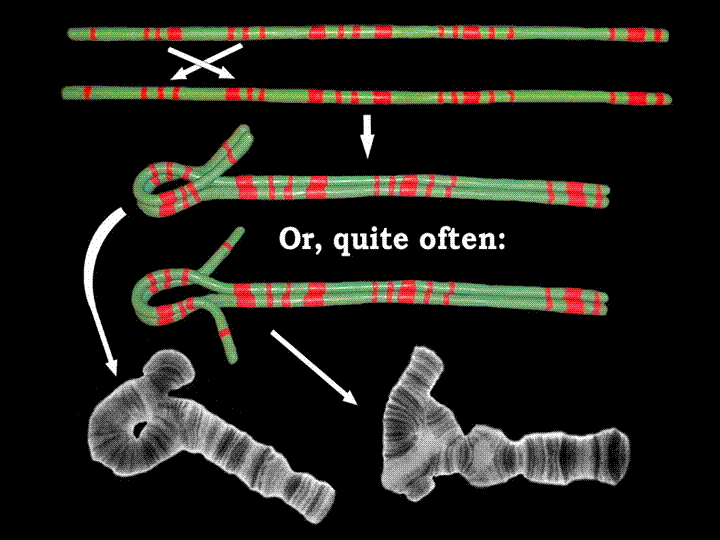Chromosomal inversion


An inversion is a chromosome rearrangement in which a segment of a chromosome is reversed end to end. An inversion occurs when a single chromosome undergoes breakage and rearrangement within itself. Inversions are of two types: paracentric and pericentric.
Paracentric inversions do not include the centromere and both breaks occur in one arm of the chromosome. Pericentric inversions include the centromere and there is a break point in each arm.
Cytogenetic techniques may be able to detect inversions, or inversions may be inferred from genetic analysis. Nevertheless, in most species small inversions go undetected. In insects with polytene chromosomes, for example Drosophila, preparations of larval salivary gland chromosomes allow inversions to be seen when they are heterozygous. This useful characteristic of polytene chromosomes was first advertised by Theophilus Shickel Painter in 1933.[1]
Inversions usually do not cause any abnormalities in carriers as long as the rearrangement is balanced with no extra or missing genetic information. However, in individuals which are heterozygous for an inversion, there is an increased production of abnormal chromatids (this occurs when crossing-over occurs within the span of the inversion). This leads to lowered fertility.
Families that may be carriers of inversions may be offered genetic counseling and genetic testing. [2]
The most common inversion seen in humans is on chromosome 9, at inv(9)(p11q12). This inversion is generally considered to have no deleterious or harmful effects, but there is some evidence it leads to an increased risk for miscarriage for about 30% of affected couples.
References
See also
de:Inversion (Genetik) it:Inversione (cromosoma) nl:Inversie (chromosomen)